Marigold Problem
go.ncsu.edu/readext?175368
en Español / em Português
El inglés es el idioma de control de esta página. En la medida en que haya algún conflicto entre la traducción al inglés y la traducción, el inglés prevalece.
Al hacer clic en el enlace de traducción se activa un servicio de traducción gratuito para convertir la página al español. Al igual que con cualquier traducción por Internet, la conversión no es sensible al contexto y puede que no traduzca el texto en su significado original. NC State Extension no garantiza la exactitud del texto traducido. Por favor, tenga en cuenta que algunas aplicaciones y/o servicios pueden no funcionar como se espera cuando se traducen.
Português
Inglês é o idioma de controle desta página. Na medida que haja algum conflito entre o texto original em Inglês e a tradução, o Inglês prevalece.
Ao clicar no link de tradução, um serviço gratuito de tradução será ativado para converter a página para o Português. Como em qualquer tradução pela internet, a conversão não é sensivel ao contexto e pode não ocorrer a tradução para o significado orginal. O serviço de Extensão da Carolina do Norte (NC State Extension) não garante a exatidão do texto traduzido. Por favor, observe que algumas funções ou serviços podem não funcionar como esperado após a tradução.
English
English is the controlling language of this page. To the extent there is any conflict between the English text and the translation, English controls.
Clicking on the translation link activates a free translation service to convert the page to Spanish. As with any Internet translation, the conversion is not context-sensitive and may not translate the text to its original meaning. NC State Extension does not guarantee the accuracy of the translated text. Please note that some applications and/or services may not function as expected when translated.
Collapse ▲
Chatham County, August 2003Diagnosis: Botrytis Flower Blight (Botrytis cinerea) Description and Biology of Botrytis Flower Blight The excessive rains of this summer have contributed to problems with flower blight and bacterial leaf spot. The best way to manage flower blight is by regular inspection and sanitation. Remove faded or blighted flowers and place them in a bag so that they may be discarded with the trash or burned. Try not to do any sanitation when plants are wet with dew or rain since this could spread the disease. Wider plant spacing can increase air circulation and promote rapid drying of plants. To control bacterial leaf spot, soak seed in four parts water to one part bleach for 40 minutes, rinse, then dry. Place your mouse over each photo to read the caption. 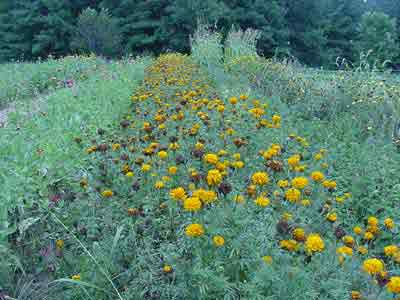 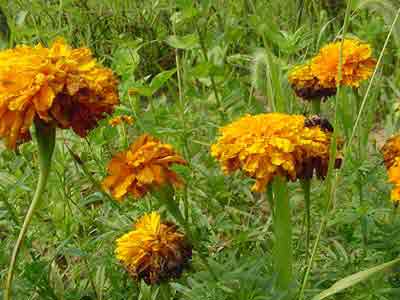 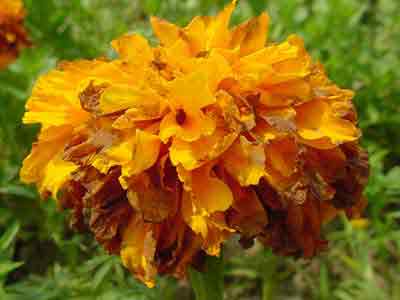 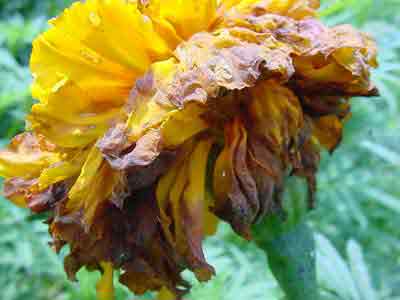 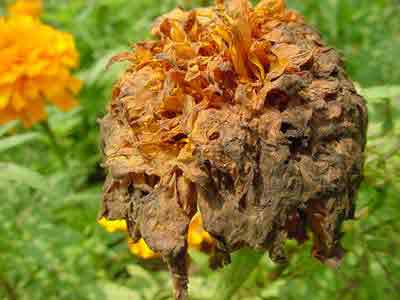 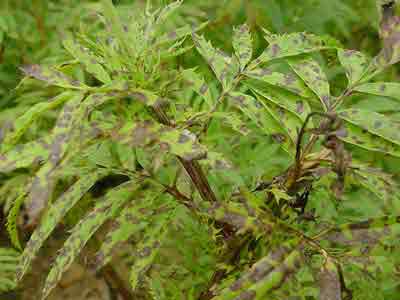 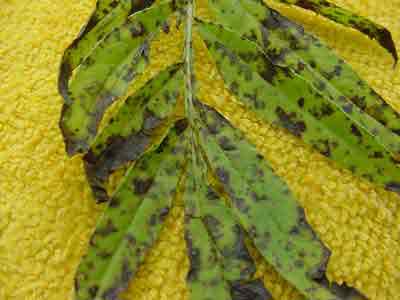 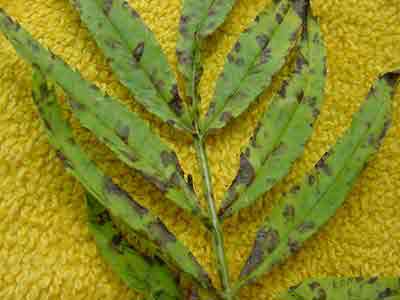 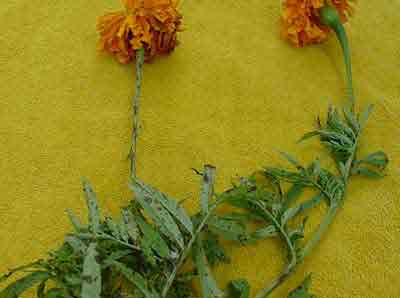 This page last updated June 13, 2006. |


